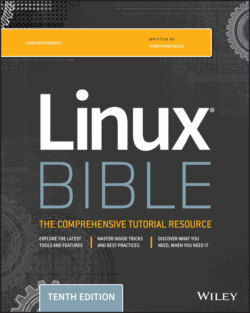Читать книгу Linux Bible - Christopher Negus - Страница 34
Using Red Hat Enterprise Linux
ОглавлениеIn March 2012, Red Hat, Inc., became the first open source software company to bring in more than $1 billion in yearly revenue. It achieved that goal by building a set of products around Red Hat Enterprise Linux (RHEL) that would suit the needs of the most demanding enterprise computing environments. After expanding its product line to include many components of hybrid cloud computing, Red Hat was purchased by IBM in July 2019 for $34 billion.
While other Linux distributions focused on desktop systems or small business computing, RHEL worked on those features needed to handle mission-critical applications for big business and government. It built systems that could speed transactions for the world's largest financial exchanges and be deployed as clusters and virtual hosts.
Instead of just selling RHEL, Red Hat offers an ecosystem of benefits upon which Linux customers could draw. To use RHEL, customers buy subscriptions that they can use to deploy any version of RHEL that they desire. If they decommission a RHEL system, they can use the subscription to deploy another system.
Different levels of support are available for RHEL, depending on customer needs. Customers can be assured that, along with support, they can get hardware and third-party software that is certified to work with RHEL. They can get Red Hat consultants and engineers to help them put together the computing environments they need. They can also get training and certification exams for their employees (see the discussion of RHCE certification later in this chapter).
Red Hat has also added other products as natural extensions to Red Hat Enterprise Linux. JBoss is a middleware product for deploying Java-based applications to the Internet or company intranets. Red Hat Virtualization comprises the virtualization hosts, managers, and guest computers that allow you to install, run, manage, migrate, and decommission huge virtual computing environments.
In recent years, Red Hat has extended its portfolio into cloud computing. Red Hat OpenStack Platform and Red Hat Virtualization offer complete platforms for running and managing virtual machines. However, the technology with the biggest impact in recent years is Red Hat OpenShift, which provides a hybrid cloud suite of software that has Kubernetes, the most popular container orchestration platform project, as its foundation. With the Red Hat acquisition, IBM has set a goal to containerize most of its applications to run on OpenShift.
There are those who have tried to clone RHEL, using the freely available RHEL source code, rebuilding and rebranding it. Oracle Linux is built from source code for RHEL but currently offers an incompatible kernel. CentOS is a community-sponsored Linux distribution that is built from RHEL source code. Recently, Red Hat took over support of the CentOS project.
I've chosen to use Red Hat Enterprise Linux for many of the examples in this book because, if you want a career working on Linux systems, there is a huge demand for those who can administer RHEL systems. If you are starting out with Linux, however, Fedora can provide an excellent entry point to the same skills that you need to use and administer RHEL systems.
